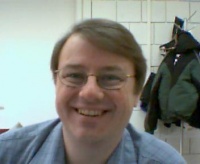ThomasHemmick
Professor Thomas K. Hemmick is one of the two founding directors of CASE along with Dr. Vladimir Litvinenko.
Professor Hemmick received his Ph.D. in nuclear physics in 1988 working with Accelerator Mass Spectrometry group at the University of Rochester under the direction of David Elmore. Following this he moved to Yale University as an Associate Research Scientist working on the E814 Experiment located at Brookhaven National Laboratory's AGS accelerator, and collaborated on the construction of the tracking detectors for E814. In 1990, he moved to the Stony Brook University Department of Physics and Astronomy as an Assistant Professor and continued his work on experiment E814 and its successor E877. He designed and built the tracking system upgrades and served as the software coordinator (or Czar) for the lifetime of the experiment.
Professor Hemmick is one of the founding members of the PHENIX Experiment at Brookhaven's Relativistic Heavy Ion Collider (RHIC). He lead the design and construction of the RICH detector focal plane, the design of the drift chamber readout electronics, and hosted the construction of the drift chambers in the Stony Brook Nuclear Structure Laboratory. He served two terms on the PHENIX Detector Council, two terms on the PHENIX Executive Council, one term as PHENIX Analysis Coordinator, and one term as convener of the Light Vector Meson Physics Working Group. Presently he has just finished leading the construction of the Hadron-Blind Detector as an upgrade to PHENIX that will be used to improve the precision of dielectron continuum measurements in PHENIX.
Professor Hemmick presently holds the title of Distinguished Teaching Professor in recognition of his excellence as a teacher. He is only the second professor in the Physics Department history to be awarded this title. Professor Hemmick is also presently a member of the Brookhaven National Laboratory Program Advisory Committee for High Energy and Nuclear Physics.
